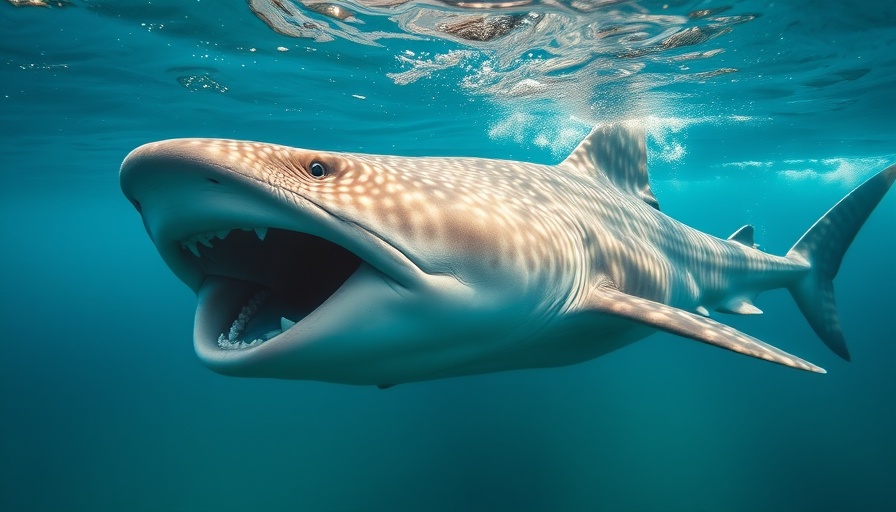
Unlocking the Mysteries of Whale Shark Birthplaces
New research from the Marine Biological Association (MBA) is shedding light on a significant mystery of the natural world: the birthing grounds of sharks. Sharks, who have been masters of the ocean for over 400 million years, have developed intricate reproductive strategies that remain largely unexplored. One species of particular interest is the whale shark (Rhincodon typus), known as the largest fish in the sea, growing up to 18 meters long and playing a critical role as a keystone species in marine biodiversity.
Unraveling the Rarity of Neonate Sightings
Despite their ecological importance, information surrounding the reproductive behaviors of whale sharks is sparse. From 1970 to 2020, only approximately 35 sightings of neonate whale sharks—those less than 1.5 meters in length—were documented globally. This glaring absence of data is a focal point of a recent study published in the journal Ecology and Evolution by the MBA's Ocean Predator Movement Ecology and Conservation research lab.
Connection to Oxygen Minimum Zones
The study’s results highlight an intriguing correlation between the distribution of neonate whale sharks and areas known as Oxygen Minimum Zones (OMZs)—regions in the ocean with extremely low levels of dissolved oxygen. The research suggests that these OMZs may serve essential functions for the early life stages of these sharks. Dr. Freya Womersley, a lead researcher on the study, describes underwater environments as potential nurseries where these young sharks can develop in relative safety.
Two Competing Hypotheses Explaining Shark Behavior
The researchers propose two key hypotheses regarding the relationship between whale shark neonates and OMZs. One theory posits that female whale sharks may intentionally give birth in these zones, where low oxygen levels offer a refuge from predators while the productivity of the surface waters presents an abundance of food. The alternative hypothesis suggests that neonates could be randomly birthed throughout the open ocean, but their low tolerance for oxygen concentration might inadvertently lead them to surface where they are more often seen, particularly in OMZs.
The Importance of Research for Conservation Strategies
With whale sharks classified as endangered, understanding their birthing habits and environments is crucial for conservation efforts. Issues such as ship collisions, habitat degradation, fishing bycatch, and climate change all threaten their survival. By identifying key OMZ areas, research can prioritize conservation efforts to understand how neonate whales might respond to changing ocean conditions. As OMZs are expected to expand due to climate-driven deoxygenation, proactive measures are needed to ensure the future of these magnificent creatures.
Future Directions and Conservation Implications
The MBA researchers suggest that future investigative efforts utilize biologging devices to gather data on how whale sharks interact with OMZs at different life stages. This knowledge could clarify how neonates adapt to new ocean chemistry conditions brought on by climate change. Dr. Womersley emphasizes the need for focused research efforts in areas that share environmental characteristics associated with neonate sightings. “By targeting regions previously identified as potential hotspots for whale shark births, we can enhance our understanding and conservation strategies for these remarkable animals,” she stated.
The Significance of Whale Sharks
Beyond their size, whale sharks hold immense value in marine ecosystems. They contribute to the health and diversity of ocean habitats. Protecting their birthing grounds not only aids their survival but also supports the entire aquatic food web. As researchers continue to delve into the depths of our oceans, findings from studies like these illuminate just a fraction of the intricate tapestry of marine life.
In a world increasingly impacted by climate change and human activity, the information gathered not only enriches scientific understanding but serves as a crucial call to action for conservationists. Protecting vital shark habitats is essential for the overall health of our oceans, ensuring that these ancient creatures continue to thrive for generations to come.
 Add Row
Add Row  Add
Add 




 Add Row
Add Row  Add
Add 

Write A Comment